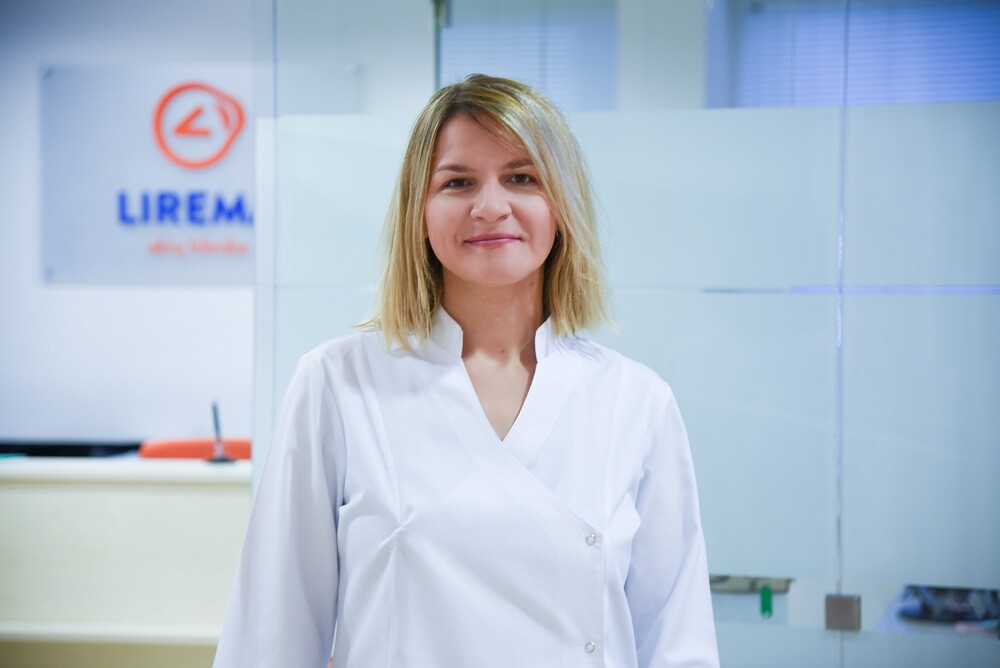The conjunctiva is a film that covers the surface of the eye. It is similar to the mucous membrane that lines the inside of a nose. Pathogens can provoke a runny nose or a cold and damage the conjunctiva, causing conjunctivitis. But how to recognise and treat it?
According to Irina Kozlovskaya, an ophthalmologist at the Lirema Eye Clinic, the main symptom of conjunctivitis is redness of the eyes, which is almost always accompanied by discharge.
“Bacterial conjunctivitis is characterised by purulent discharge, and it is precisely from the discharge that we can make a preliminary assessment of whether the conjunctivitis is bacterial or viral. The patient may also feel discomfort, like sand in the eye. In this case, children often rub their eyes, thus conveying their unpleasant feelings. There is also sensitivity to light, which is more common in other eye diseases when the cornea and iris are damaged,” says the doctor.
One of the Most Common Eye Diseases in Children
“In scheduled procedures, frequent visits by young patients are due to refractive errors such as myopia, astigmatism, farsightedness and strabismus (crossed-eyes). Refractive errors begin in childhood and only intensify in adulthood, after which other treatments are sought, such as laser eye surgery. A stye is also often claimed. As a matter of urgency, children are usually admitted to the ophthalmologist precisely because of conjunctivitis, inflammation of other eye diseases or injuries,” explains I. Kozlovskaya.
According to the specialist, if a child has recurrent eye inflammation, it should first be ascertained whether it is really conjunctivitis or whether the problem lies elsewhere
“As the immune system develops, it is exposed to various viruses, and young preschool children frequently suffer from colds so that conjunctivitis may recur,” says I. Kozlovskaya.
One of the causes of recurrent conjunctivitis is the narrowness of the tear ducts, which causes the nasal secretions and swelling of the mucous membranes to interfere with tear drainage, which can damage the conjunctiva. There are also cases where a child tends to rub their eyes and directly transfer the infection.
“Most standard conjunctivitis occurs at preschool; children usually grow out of it afterwards, with no long-term consequences. Of course, there can be other allergic or chronic causes of recurrent conjunctivitis when the conjunctivitis is not so acute but co-occurs with keratitis, so-called corneal inflammation. If recurrence of ocular inflammation occurs in the form of stye, it may signal blepharokeratoconjunctivitis, which is also chronic and requires specific treatment. If the treatment of such a case is delayed, the consequences can be painful,” says the ophthalmologist.
Complications and Prevention
According to I. Kozlovskaya, viruses can also enter the eye directly by rubbing the area with dirty hands. More often, conjunctivitis occurs when you already have a viral disease, for example, a sore throat. The current Covid-19 virus also causes conjunctivitis, although this is less common.
“Prolonged runny nose can turn into sinusitis, and if the inflammation passes into the eye socket, then there is a chance to develop inflammation of the eye socket tissue – cellulite, when the eyelids and conjunctiva become swollen, red, there is discharge, and eye movements may be impaired. If left untreated, this condition can endanger vision and even life,” the doctor warns.
Bacterial conjunctivitis is the most common complication in infants due to tear duct obstruction. This type of conjunctivitis, like viral, is also common in kindergarteners, and when children start school, the incidence of bacterial conjunctivitis decreases; however other eye problems begin.
“Babies can experience the symptoms of conjunctivitis due to the lack of proper tear ducts, so it is vital to clean the secretions. Cleaning can be done with special wipes – clean from the outside to the inside without missing the creases. Of course, this should be done gently and carefully because babies’ skin is susceptible,” advises I. Kozlovskaya.
For older children, symptoms can be relieved by instilling artificial tears and clearing eye discharge. Also, cold compresses can be applied after consulting a family doctor and ensuring it is conjunctivitis. Although curing conjunctivitis does not require specific treatment, antibiotic drops can alleviate the course of the disease and shorten the duration of bacterial conjunctivitis.
According to the doctor, it is important not to diagnose the disease yourself and not experiment with homemade methods such as chamomile compresses.
“A lot of children these days are allergic. When an allergy starts, it’s hard to tell if this is a reaction to herbs or allergic conjunctivitis. Conjunctivitis is visible from the outside, it does not require detailed examinations, so it is necessary not to be afraid of remote consultation. Your General Practitioner can recognise and prescribe treatment for most cases of conjunctivitis. The most crucial thing is to check and identify the origin of the symptom in time,” the doctor concludes.
